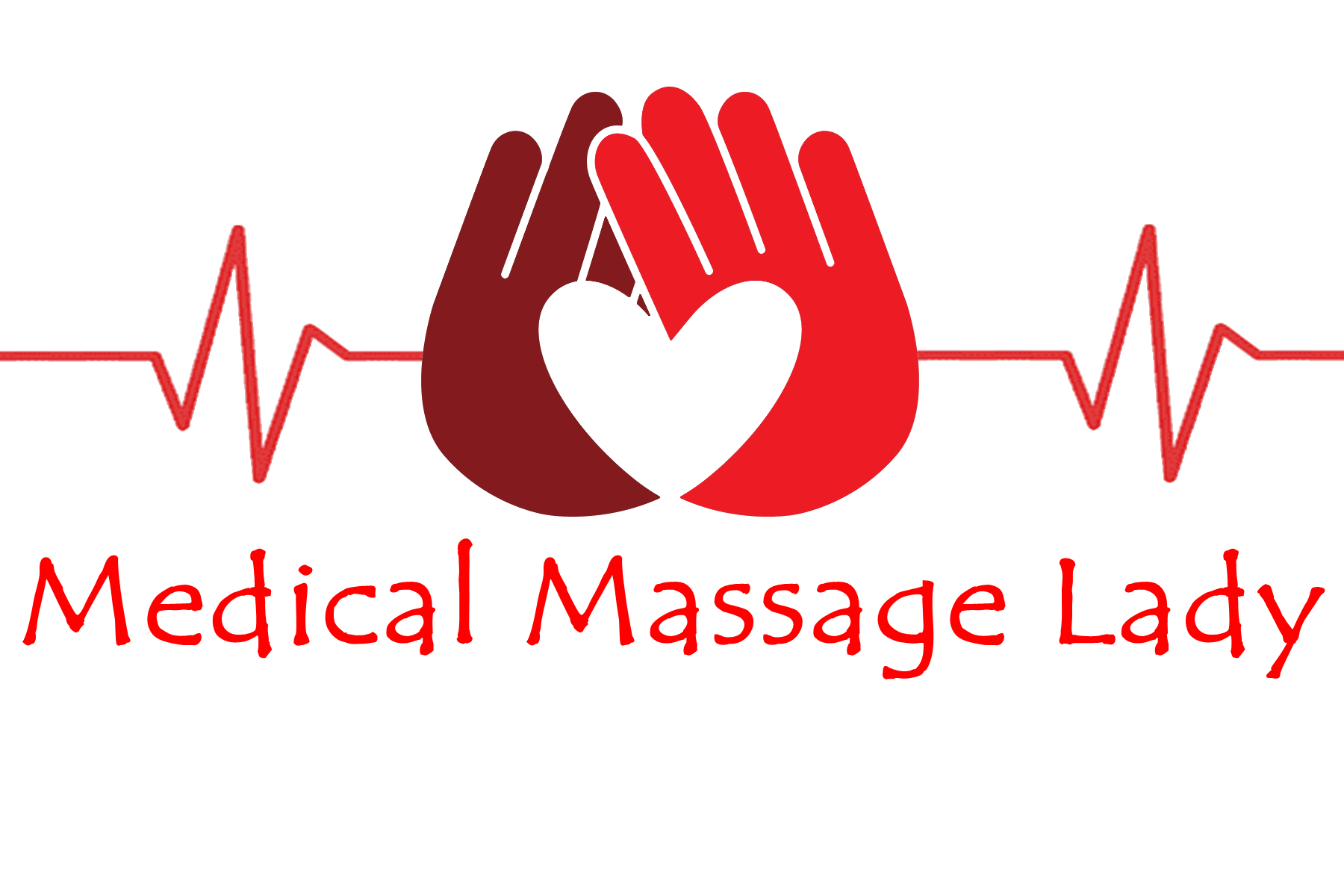- 07736 104738
- sam@medicalmassagelady.com
- Mon - Sat, 8:00 - 18:30
The 2 sciatic nerves are the largest in the body, and they connect the lower spine to the feet, via the buttocks and the back of the thighs, controlling muscles and sensation in the legs. Sciatica is more a symptom of other issues than a condition itself, caused by irritation or compression of the sciatic nerve.
Massage can alleviate sciatic nerve pain by:-
• increasing endorphin release which will ease pain and any burning sensation
• releasing tight muscles in the lower back or the piriformis within the buttock, which can press on the nerve.
RISK FACTORS:-
- Age - people over 35 have a higher risk
- Occupation – heavy lifting for long periods
- Sedentary lifestyle - sitting for long periods and physical inactivity
- Pregnancy
MOST COMMON CAUSES OF SCIATICA:-
• HERNIATED LUMBAR DISC– the inner part of the disc leaks through the outer core, irritating the nerve (about 90% of cases)
• DEGENERATIVE DISC DISEASE:-
1. proteins from weakened discs are exposed and irritate the nerve
2. Bone spurs resulting from spinal degeneration, can press on the nerve
• PIRIFORMIS SYNDROME - the sciatic nerve passes under the piriformis muscle and can be pinched if the muscle is tight
LESS COMMON CAUSES OF SCIATICA:-
• ISTHMIC SPONDYLOLISTHESIS – stress fractures cause a vertebra to slip over another causing the nerve to get pinched
• LUMBAR SPINAL STENOSIS – the spinal canal becomes narrowed with age and soft tissue overgrowth and bulging discs compress the nerve
• SACROILIAC JOINT DYSFUNCTION - can irritate the L5 nerve, which lies over the sacroiliac joint
• PREGNANCY – weight gain and change in the centre of gravity
• SCAR TISSUE - scar tissue can compress the nerve root
• MUSCLE STRAIN - inflammation due to muscle strain may compress a nerve
• SPINAL TUMOUR – tumours may compress a nerve
• INFECTION - can affect the nerve root
• FRACTURE - fracture of a lumbar vertebra
• ANKYLOSING SPONDYLITIS - chronic spinal inflammation may cause sacroiliitis,
SYMPTOMS:-
• Sharp lower back pain, radiating down the back of the thigh to the lower leg
• Constant (usually one sided)pain in the rear or leg that is worse when sitting
• Hip pain
• Burning or tingling in the leg
• Weakness/ numbness/difficulty moving the leg or foot
• shooting pain with difficulty standing
• pain feels better when lying down or walking
• pain worsens with change of position or sudden movements eg. when sneezing
TREATMENT:-
• Heat/ice packs – 20 minutes every 2 hours may ease pain
• Pain medication – anti inflammatories and possibly muscle relaxants in the short term
• Exercises such as walking and stretching.
• Surgery – in chronic cases, if other treatment options have failed, to remove slipped discs or widen the spinal cord to relieve pressure
PREVENTION
- sciatica can be prevented through regular exercise and stretching
STRETCHES FOR SCIATICA
You can start with the reclining pigeon pose and work up to the forward pigeon pose, but if the stretch causes pain you should stop.
• reclining pigeon pose

– opens the hips and stretches the piriformis
• sitting pigeon pose
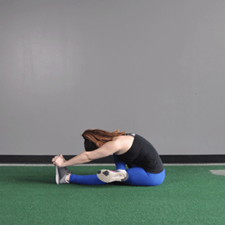
forward pigeon pose

knee to opposite shoulder
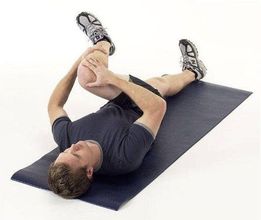
sitting spinal stretch
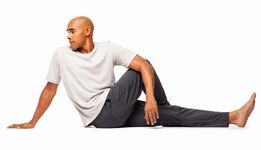
standing hamstring stretch
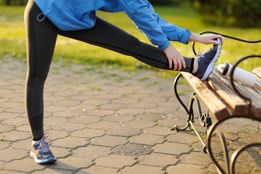
CHEMICAL SCIATICA
Sciatica is a lumbar radiculopathy ie.originates from the lumbar or sacral nerve roots, and is the symptom of a bigger problem, so the cause needs to be identified in order to treat it appropriately.
While not completely understood, it has been thought that there were 2 main causes of sciatica, these being:-
1) MECHANICAL CHANGES may lead to pain, nerve damage and functional changes in nerve roots when combined with inflammation. Mechanical compression of the nerve may occur as a result of:-
- herniated disc in the lower back, causing irritation and/or compression of the sciatic nerve root
- spinal stenosis, or narrowing of the intervertebral opening, may compress or irritate the sciatic nerve roots which pass through it.
- degenerative changes in the spine, eg:-- thickening of facet joint capsules and/or ligaments, may directly compress the sciatic nerve
- spondylolisthesis ie. segmental instability of a vertebral segment when one vertebra slips over the one below it
- vertebral defects (spondylolysis)
- complete dislocation of one or more vertebrae may directly compress the nerve root
- tumours, cysts, infection, or abscesses in the lower spine or pelvis may compress the sciatic nerve
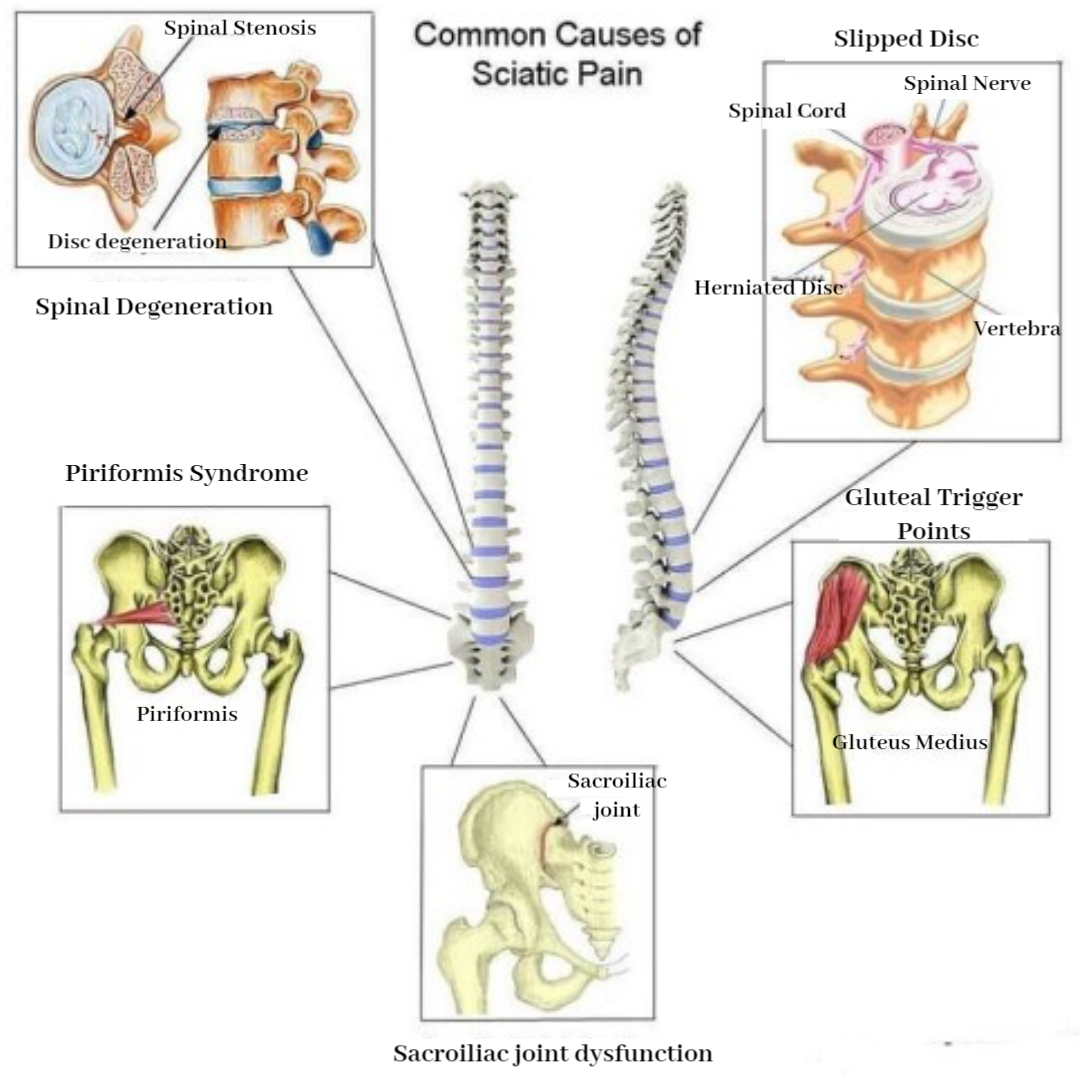
2)COMPRESSION of lumbar or sacral nerves, or of the sciatic nerve itself, may affect nerve root conduction and nutritional intake of spinal nerve roots. This may occur due to:-
- degenerative disc disease causing deterioration and misalignment of the vertebrae eg.a bulging or herniated intervertebral disc
- spinal stenosis, (narrowing of the spinal canal) caused by bone spurs, spondylolisthesis, inflammation, and herniated discs. This not only restricts the space for the spinal cord., but may irritate lumbar and sacral spinal nerves, which consequently affect the sciatic nerves. Spinal stenosis often causes bilateral sciatica
- piriformis syndrome - the sciatic nerve occasionally runs through the piriformis muscle rather than beneath it, so any muscle spasms due to trauma or overuse, will compress the nerve
- pregnancy - muscular tension, vertebral compression, and postural changes caused by the growing uterus presses on the sciatic nerve
However research shows that chemical inflammation can be a 3rd cause of sciatica, and when inflammation and compression combine in the lower spine, this will cause pain and neurological deficit associated with sciatica.
3)CHEMICAL (AND METABOLIC) RADICULITIS
- inflammation of the nerve root by chemical irritants, which may be due to:-
- dissemination of disc fluid, hyaluronic acid and/or fibronectin (protein), from degenerated or herniated discs, along the nerve root sheath
- disc degeneration may cause nerve tissue to grow into the disc
- Secretion of glycosphingolipids (fats) and neurofilaments (protein)by the immune system with exposure of disc material from herniated discs
RISK FACTORS
- Obesity
- Older people who are tall (typically over 180 cm for men and 170 cm for women)
- Women
- Occupational eg.truck drivers, machine workers, carpenters, and weight-lifting athletes, which involve sitting for long periods of time, regularly bending the spine forward or sideways, or lifting the arms above shoulder level
- Vitamin B12 deficiency - B12 helps to maintain nerve health by synthesizing the fatty (myelin) sheath that covers the nerves, required for nerve function and conduction of impulses
- Diabetics taking metformin may be at increased risk of vitamin B12 deficiency due to malabsorption
- Genetics - may increase the risk of degeneration of intervertebral discs, and change the structure and function of collagen proteins within the disc
SYMPTOMS
usually occurs unilaterally, but may be bilateral eg. in cases of spinal stenosis. Symptoms are usually felt in the muscles supplied by the affected nerve. The specific nerve root affected will determine whether pain and/or neurological symptoms are felt in the lower back, buttocks, thigh, leg, and/or foot. Pain usually indicates irritation or inflammation of the nerve root, whereas neurological symptoms generally suggest compression.
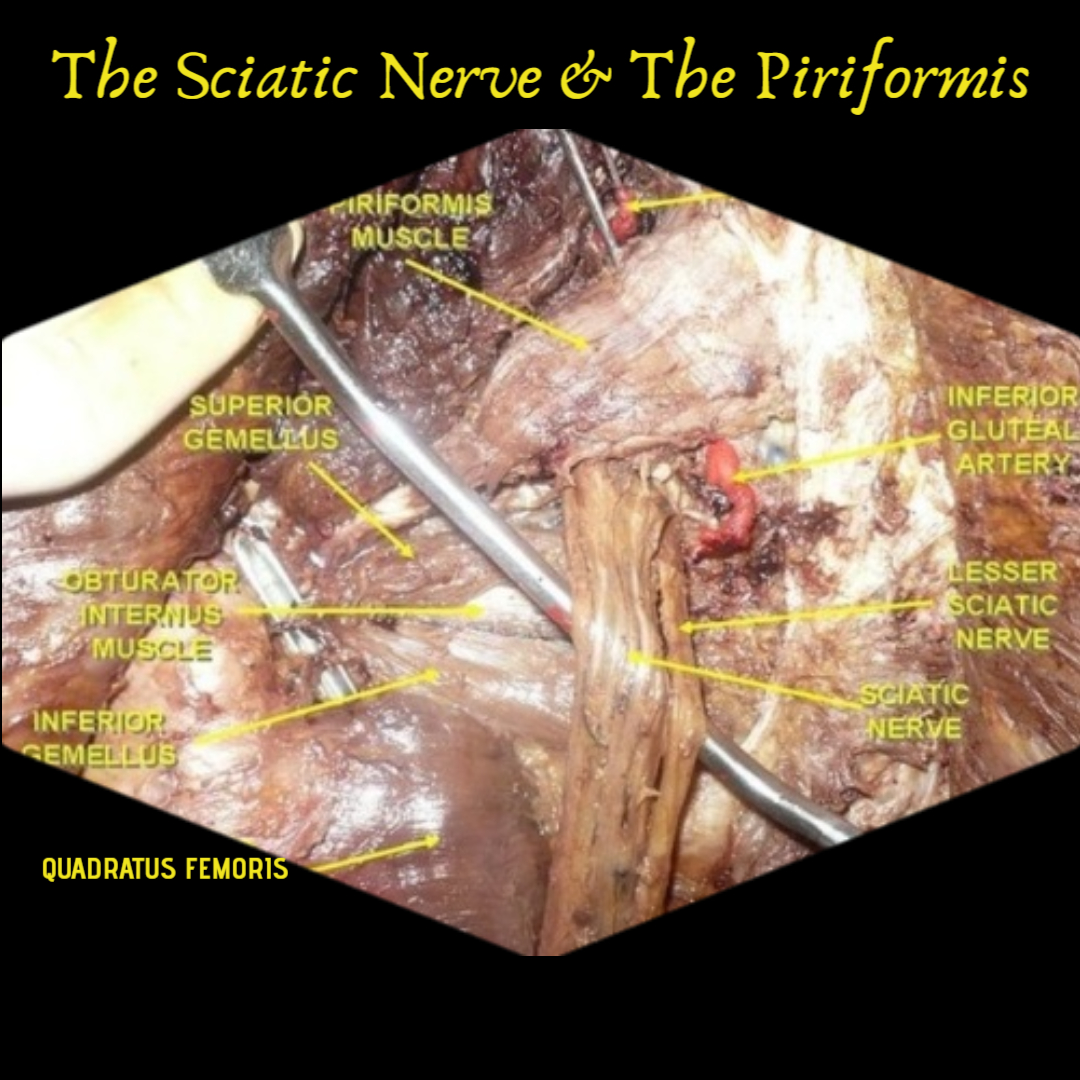
Sciatica pain is often the first symptom and has many characteristics:-
- may worsen over time and become debilitating
- may be intermittent or remain constant for longer periods
- may be relieved with certain postures, exercises, and/or medications
- pain is usually a sharp, burning pain but may also include:--
- Electric shock-like, shooting pain
- Throbbing or pulsating pain
- Constant dull ache
- Discomfort that comes and goes
- leg pain is usually more severe than back pain
Neurological symptoms that tend to occur with compression include:-
NUMBNESS - may occur when the nerve impulses are unable to pass through the sciatic nerve eg.the side of the calf and/or the heel, sole, and/or top of the foot
MUSCLE WEAKNESS :-
- in the thigh muscles when trying to bring the thighs together
- in the leg and foot muscles when trying to bend the knee or point the foot and/or toes upward and/or downward
- foot drop due to weakness in the leg and foot
- difficulty in lifting the front part of the foot while walking
PARAESTHESIA - abnormal skin sensations due to dysfunctional nerve conduction eg.tingling, tightness, pins-and-needles, and/or a crawling feeling along the back of the thigh and/or leg
RESTRICTED MOVEMENT
When pain is severe or suddenly increased, and accompanied by fever, nausea and/or weight loss, or if there is loss of bowel and/or bladder control, medical help should be sought due to the possibility of cauda equina syndrome, infection, or spinal tumours.
TREATMENT
- non-steroidal anti-inflammatory drugs (NSAIDs) to reduce inflammation
- muscle relaxants
- rest
- oral steroids for more stubborn cases of inflammation
- exercise and physical therapy to help increase flexibility, range of motion, posture and muscle strength. Exercise also releases hormones called endorphins which are natural pain relievers
- heat and cold packs
- an epidural steroid injection (ESI) containing anti-inflammatory medication directly into the epidural space to target the nerve root
- manual therapy - deep tissue massage may help relieve muscle spasms and improve the discomfort associated with sciatica, release endorphins to ease pain, promote relaxation and reduce stress and tension
- nutrition to combat nutritional deficits
- trigger point injections to calm muscle spasms - local anaesthetic and steroid into a trigger point, or ischaemic muscle
- Botox (Botulinum Toxin) to reduce muscle spasms, ischemia and inflammatory markers, thereby reducing pain, particularly in cases of piriformis syndrome
- Infusions technique – extended delivery of local anaesthetic via a catheter into the epidural space to continuously block pain
- Transcutaneous Electrical Stimulation (TENs) – decreases pain perception via electrical stimuli which confuse the spinal cord and brain pain processing centres, promoting relaxation of the muscle, mobility, and pain relief
- Spinal Cord Stimulation (SCS) – In this treatment modality, your doctor implants an electrical device that decreases the perception of pain by confusing the spinal cord and brain pain processing centres. Initially a trial is done to see if this device will be of benefit to you long-term. In the initial trial, your pain physician places a small electrical lead through a needle in the epidural space. Painful signals are replaced by tingling electrical signals. If you experience significant pain relief in your trial, you may opt to have a permanent SCS device implanted
- Intrathecal Pump Implants – In some patients, implanted pain pumps can provide significant long-term pain control. The effectiveness of intrathecal therapy in patients suffering from nociceptive pain showed a pain reduction in 66.7% of patients experiencing pain due to cancer (Becker 2000).
- Disc decompression to treat a bulging disc by aspirating from the affected disc to relieve pressure
- surgery as a last resort to create more room for a compressed nerve, possibly involving removal of a deteriorated spinal disc, extraction of tissues around the nerve or adhesiolysis to remove excessive scar tissue in the epidural space
